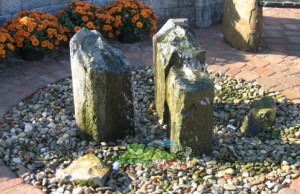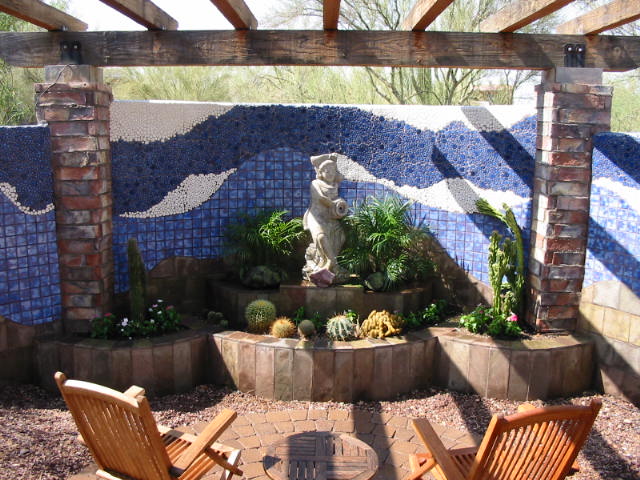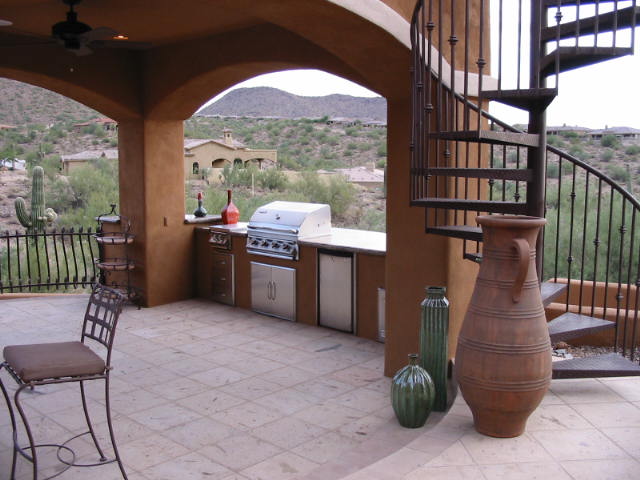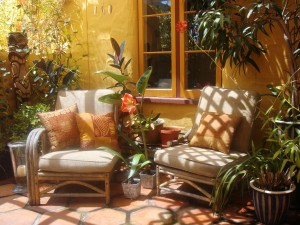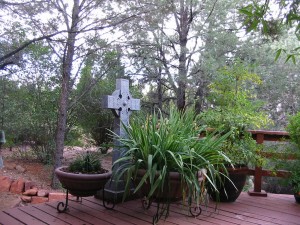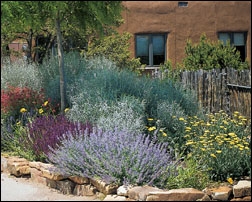Decorative garden fountains are prefabricated fountains that need some degree of installation. Fountains that are available at a garden center fountain display are always prefabricated.
Decorative garden fountains include styles such as tabletop fountains, container water gardens, stand-alone fountains, bubbling urns, spitters, and wall fountains. They are typically made of resin, lightweight reinforced concrete, fiberglass resin, natural stone or copper.
If you look through a garden fountain catalog, you will see hundreds of styles of fountains, from classical European designs to modern contemporary designs. These are all prefabricated and come ready to assemble. All you need is a water source and electricity.
All of these decorative garden fountains have some kind of reservoir where the pump is located and to allow for the recirculation of the water. Most of of these prefabricated types of fountains will not include a water leveler fill valve or built to accommodate one. You should always install a fountain that can automatically keep the basin full using an automatic fill valve connected to the main water supply under pressure and do not rely on a garden hose.
 Decorative garden fountains are much used like an accessory such as a pot or statuary that adds to the décor of the landscape. Certainly they should be chosen for their style or theme as well as the proportion to the space in which they will be placed.
Decorative garden fountains are much used like an accessory such as a pot or statuary that adds to the décor of the landscape. Certainly they should be chosen for their style or theme as well as the proportion to the space in which they will be placed.
This fountain pictured left, is a self contained fountain wherein the basin is the fountain itself with no need to supply a separate reservoir to recirculate the water. A variation of this design is to place it over an underground basin so that the water cascades down the sides of the pot.
Another type of decorative garden fountain is based on a design that puts the basin underground in a reservoir that contains the pump and is covered with gravel yet still allows water to reach the basin. The benefit of this kind of fountain is that you don’t see the basin which usually sits right on the ground surface and often is bulky. Above ground basins are simply functional reservoirs in which to hold the water and are secondary to the aesthetics of the decorative part of the fountain that distributes the water either through gurgling spout, a bowl, tiered shallow bowls or cascading.
Bubbling Urns and Spitters are a type of decorative fountain. These are typically set atop the underground reservoir that keeps re-circulating the water. Once the urn fills with water, the water spills out and over into the underground basin, which pumps the water back up through the urn.
 If a spitter or decorative fountain is more to your liking, you can still set it on the reservoir or off to the side and a pipe will transfer the water from the basin up through the center of the spitter or fountain and directed to the underground basin.
If a spitter or decorative fountain is more to your liking, you can still set it on the reservoir or off to the side and a pipe will transfer the water from the basin up through the center of the spitter or fountain and directed to the underground basin.
JSL Landscape Design
Build has installed several Aquascape decorative garden fountains that incorporate an extra large reservoir called the AquaBasin™. The large AquaBasin supports heavy loads and holds 75 gallons of water. Large basalt columns can be set atop the basin for a truly impressive decorative water feature in the landscape. For a more formal look, try an impressive brass sculpture.
